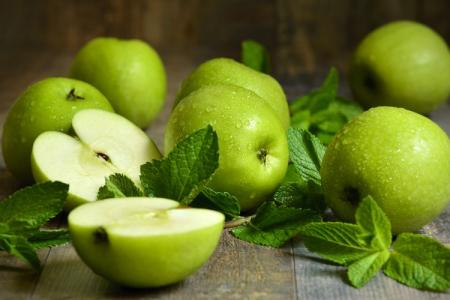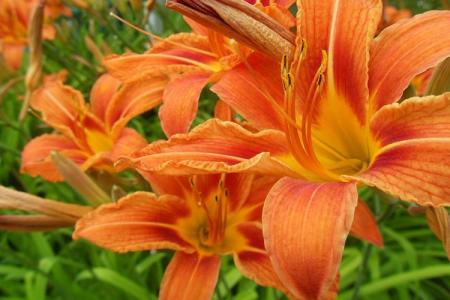
You can revive and transform the most boring fence with the help of beautiful green spaces. Neat flower beds, dense shrubs or spreading tree crowns will add color to the site and protect from the outside world. We tell you what to choose and plant along the fence!
Flowers
If you have a beautiful stone, wooden or forged fence, it can be emphasized by a lush and colorful flower bed. Plant flowers in one or more rows, using a ladder, or with complex decorative compositions.
Roses
Roses are very capricious, require fertile soil, regular watering and dressing. They are sensitive to drafts, lack of light and any other external stimuli. But if you manage to grow a hedge of roses, your garden will become truly royal.
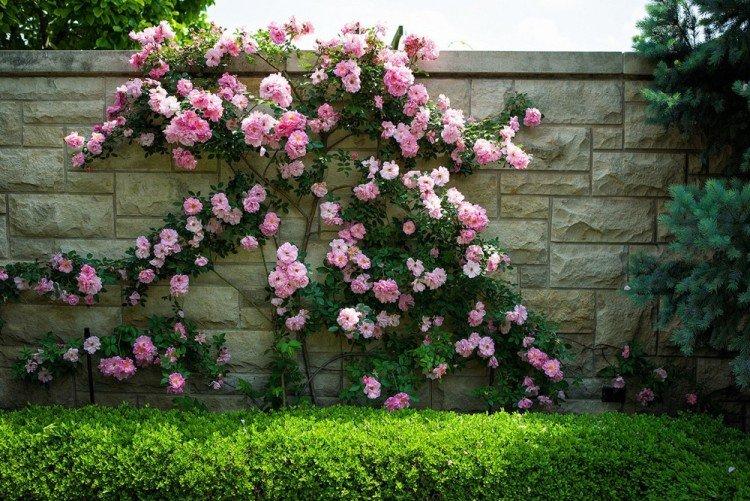
Rudbeckia
Rudbeckia is often found in areas in our latitudes, but not everyone knows its name. The people call the flower with large yellow inflorescences the "golden ball". Rudbeckia reproduce by conventional sowing and look very good in large groups along the fence.
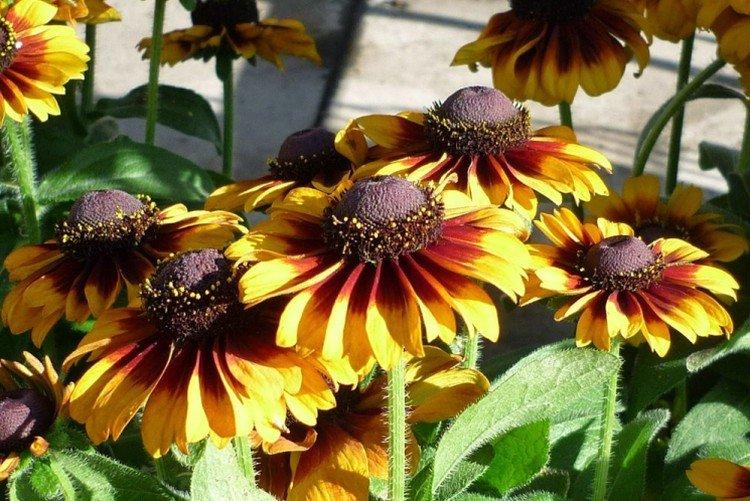
Mallow
Mallow is an unpretentious perennial that pleases with its flowering until mid-autumn. It multiplies easily and does not need complex maintenance throughout the season. Mallow grows very tall, so it is suitable for disguising a not too beautiful and neat fence.
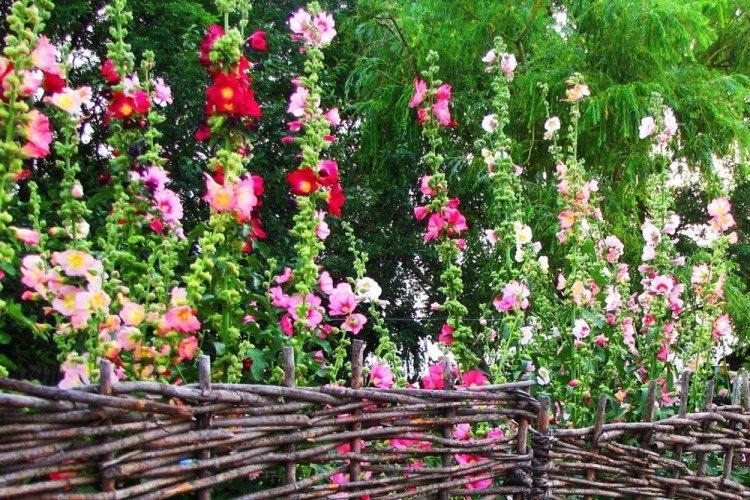
Sunflower
Tall and bright sunflowers are not the most obvious choice for decorating a site. But think: they are big, beautiful, unpretentious and stretch to the sun by 1-1.5 meters! Even the most ordinary-looking fence in the country can be easily hidden behind such flowers.

Primrose
Primrose is ideal for small decorative flower beds. It strikes with a riot of colors and quickly dissolves with the onset of warmth. While the rest of the plants are just awakening after winter, the primrose is already pleasing with its delicate beauty. It's also grown as a perennial, so you don't have to re-sow seeds every spring.
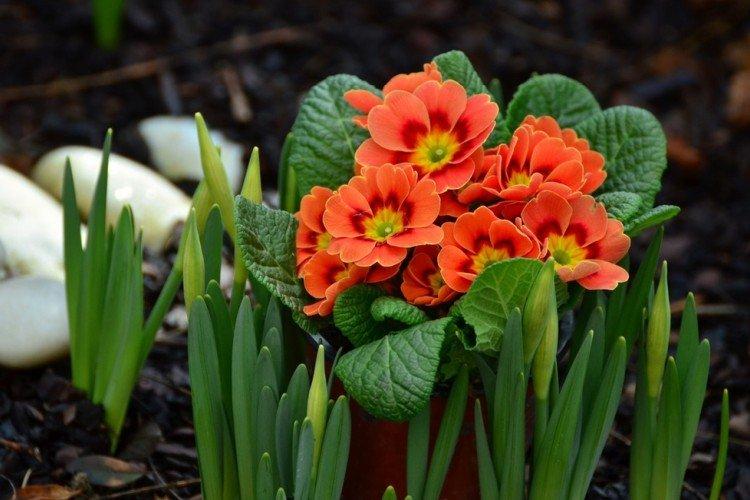
Lavender
Lavender grows in delicate, fragrant clusters and looks great along fences and garden paths. It will immediately fill your site with the spirit of the French province, but in return it will require a lot of light and abundant watering. Contrary to stereotypes, lavender is not only purple, but also white, pink or blue.

Violets
For creating an edge layer of multi-layered compositions or for mixed mixboards, a violet is wonderful. Its flowers can be purple, lilac, pale blue or deep burgundy, almost black. Violet loves shaded areas, and this is just what the plants will provide higher along the fence.
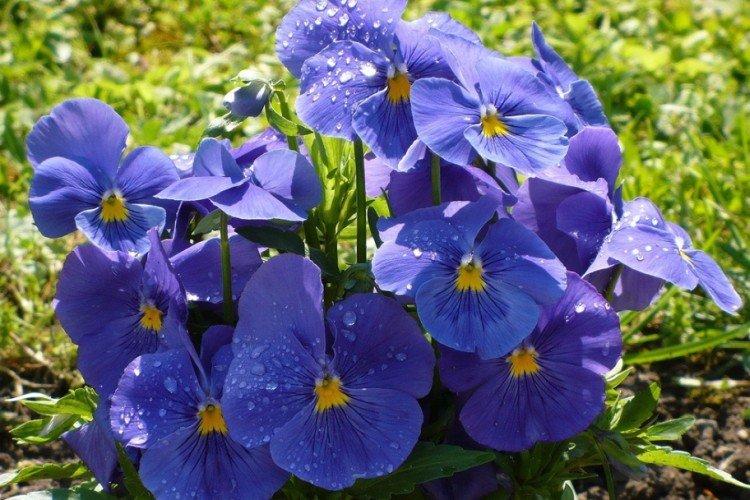
Peonies
Peony is another luxurious perennial that you only need to plant once and enjoy its beauty every season. It grows into tall, spreading bushes with large flowers, so it is great for planting along a fence. Peonies do not require constant feeding and complex care, despite their amazing decorative effect.
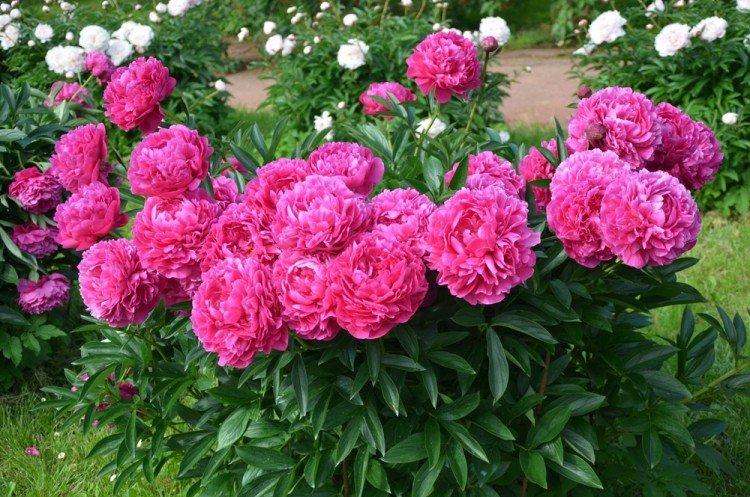
Lily
It is impossible to remain indifferent to the exotic beauty of lilies. A huge variety of varieties are distinguished by the most bizarre colors. But keep in mind that lilies require free space and do not tolerate shading by tall trees. Therefore, it is better to plant them along the fence solo or combine them with undersized flowers.
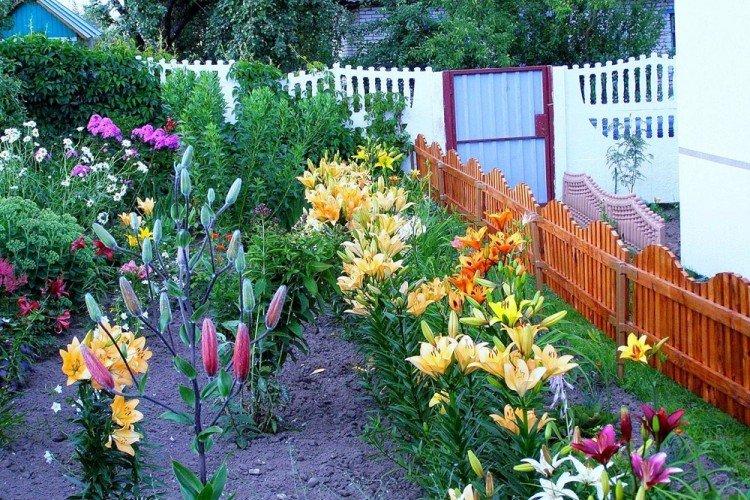
Tulips
Bright multi-colored tulips are planted on their own only along low curbs when creating garden paths and landscape compositions. But they perfectly complement the flowering mixboards around the fence around the site. Choose varieties with different flowering periods - and they will delight you from the first days of spring to summer.

Shrubs
Shrubs can be used as an independent hedge, or you can decorate an existing fence with them. Use varieties of the same size but different colors.Do not forget about crown molding so that your fence is always beautiful and tidy.
Derain
It is the most popular shrub for planting along fences because it is easy to cut and keeps its shape well. Deren has an unusual silver color, and it also gets along with other varieties without problems. Such a fence reliably protects from dust, if a road stretches on the other side. And the lawn grows quickly and grows by a meter in just six months.
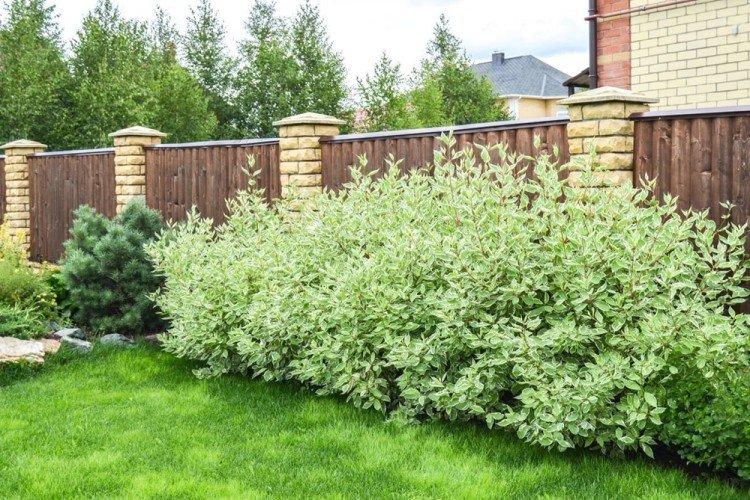
Barberry Thunberg
The main advantage of this type is its wonderful appearance. Globular bushes with large matte leaves grow by 90 cm. In autumn they acquire a delightful red-yellow hue and do not fly around for a long time. But remember that the Thunberg barberry does not like drafts, cold wind and shade.
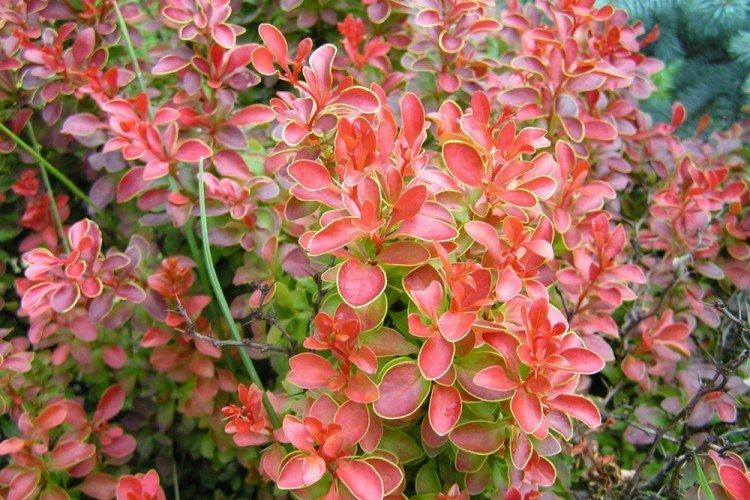
Hydrangea
For landscaping along the fence, panicle hydrangea with large lush inflorescences is best suited. It grows as a large loose bush up to 2-3 meters, and it can be given any shape. The tree-like hydrangea with its dense greenish balls-inflorescences is also good.

Chubushnik
Chubushnik was nicknamed the double of jasmine for a reason, but at the same time it is much less capricious and more resistant to our latitudes. A perennial ornamental shrub tolerates severe winters well, and with the onset of flowering pleases with a delicate jasmine aroma and snow-white inflorescences. In the compositions along the fence, the chubushnik goes well with hydrangea, because it belongs to the same family.
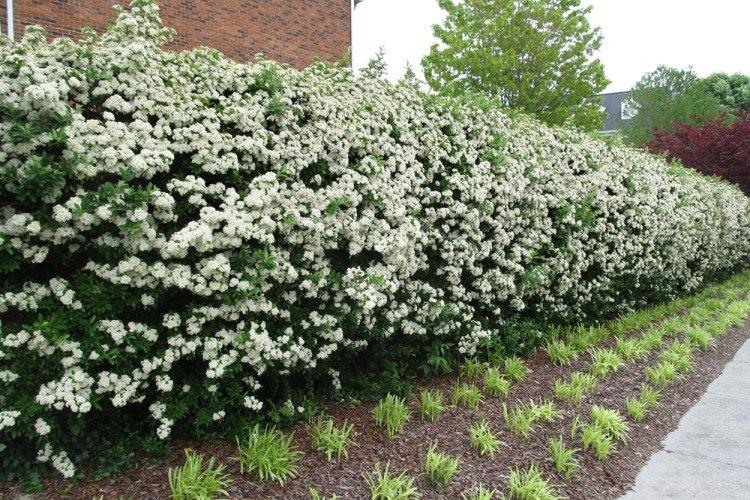
Spirea
Spirea is a beautiful ornamental shrub with bright large leaves and unusual pubescent inflorescences. It is absolutely unpretentious, it does not need to be constantly fertilized and watered, and it coexists well with other plants. Spirea bushes can be molded or left as they are - they grow beautifully without pruning.
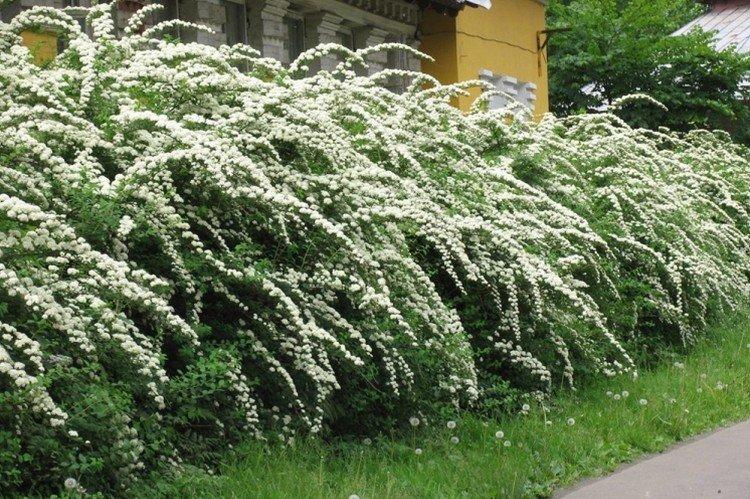
Lilac
Lilac is appreciated for its beauty, aroma and variety of shades - it will become a real decoration of the site along the fence. The Amur lilac is considered the most frost-hardy, and the rest are more demanding on heat. All species need good lighting, low water table and regular maintenance.
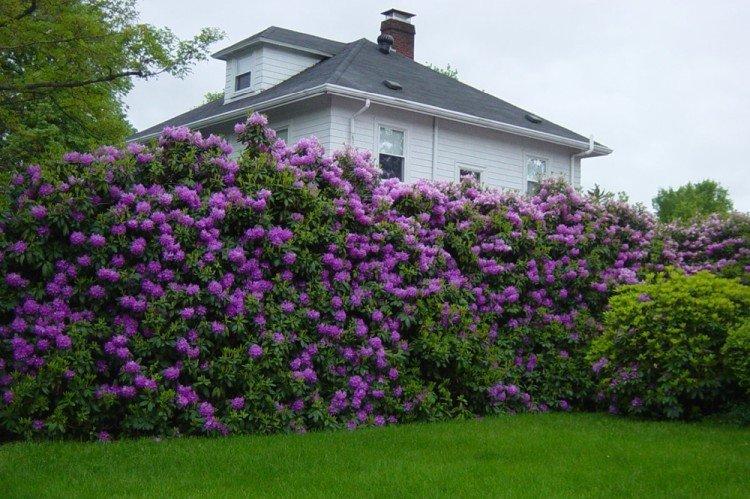
Elder
In our latitudes, elderberry is often found on the sides of paths and country roads. This means that it is great for landscaping the site along the fence. Black elderberry has dozens of decorative varieties with colorful leaves and increased productivity. The bushes are very moisture-loving, but at the same time they are very hardy.
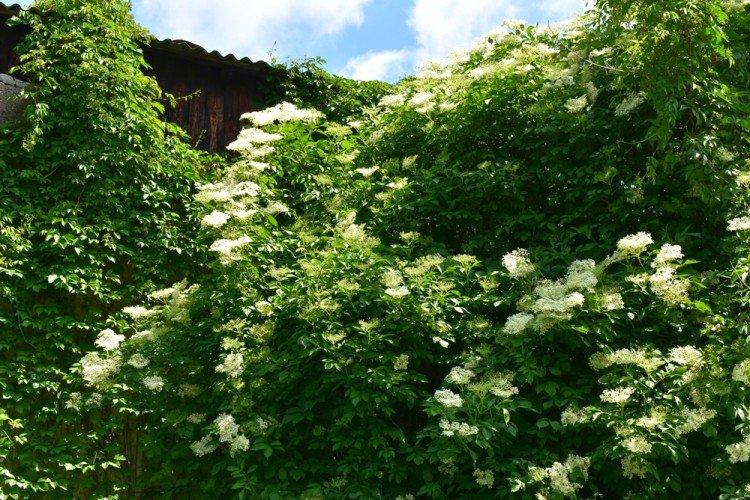
Currant
Currant bushes are quite difficult to take root, but then they delight with beauty, aroma and healthy harvest. They are planted at a distance of about half a meter and in the spring they carry out forming pruning. Currants love the sun, loosening the soil and root watering. After 15 years, the shrubs will have to be renewed.
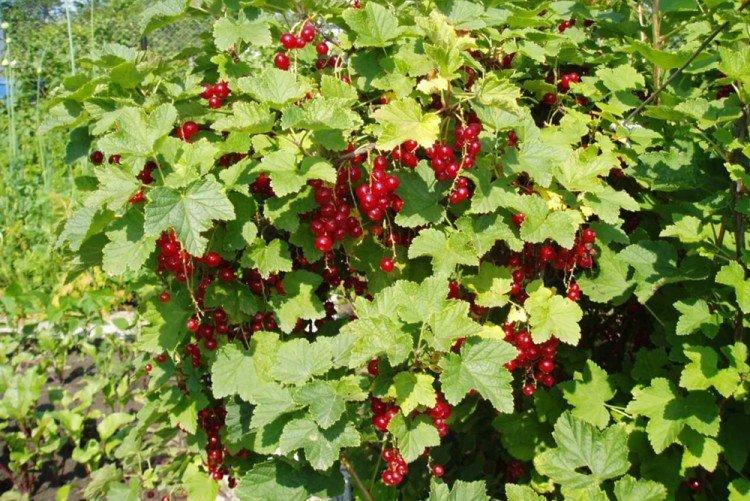
Blackberry
If you want to plant bushes of berries along the fence, but there is no time for constant care, choose a blackberry (or raspberry). She is very unpretentious and will delight you with a rich harvest every year. Just keep in mind that both species multiply quickly and fill the entire site. Watch this and don't let the branches touch the ground.
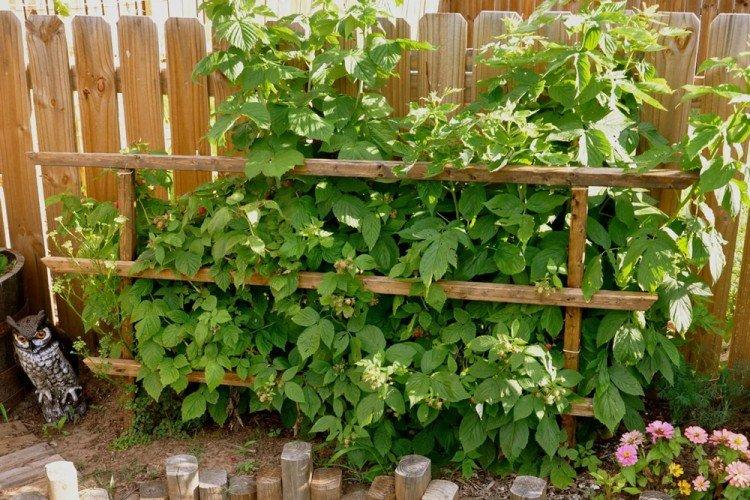
Boxwood
The most popular evergreen shrub for garden sculptures is boxwood. It is used by landscape designers around the world as the main element and as a complement to the composition. Boxwood grows slowly: on the one hand, you first have to be patient, and on the other, later you will not need to thin out and shorten the crowns every season.
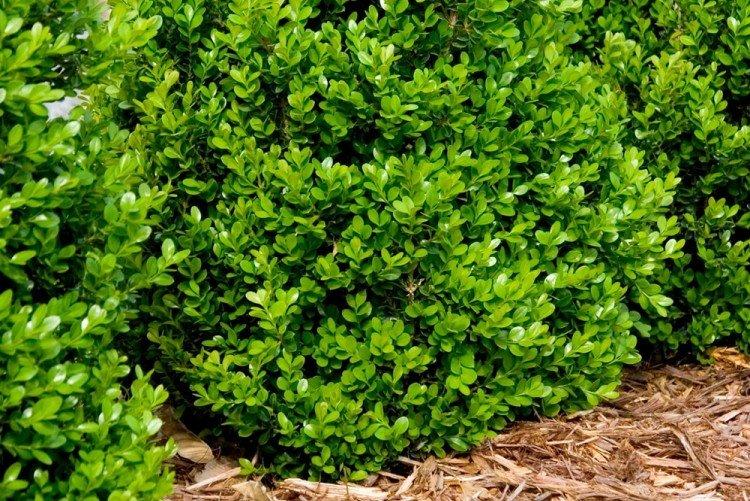
Trees
The trees along the fence will not only close your area from prying eyes, but will also give a long-awaited shade in the heat. The main thing is to choose species of approximately the same size and maintain the distance between them, so that after a dozen years all the crowns and roots get along with each other.
Blue spruce
Blue spruce in landscaping is prized primarily for its amazing color. Plant seedlings along the fence with a distance of 2 meters, and soon you will be pleased with a lush voluminous crown.Blue spruce has a rather weak surface rhizome, so it does not tolerate stagnant water very well.
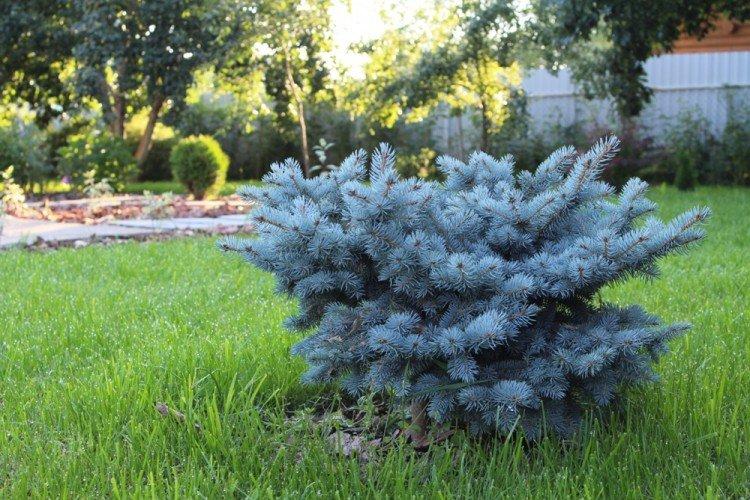
Thuja
Thuja is unpretentious to soil, irrigation regime and conditions of our climatic latitudes. For its amazing ability to preserve almost any form, it is actively used in landscape compositions all over the world. Some varieties are more like shrubs, while others grow into trees up to several meters.
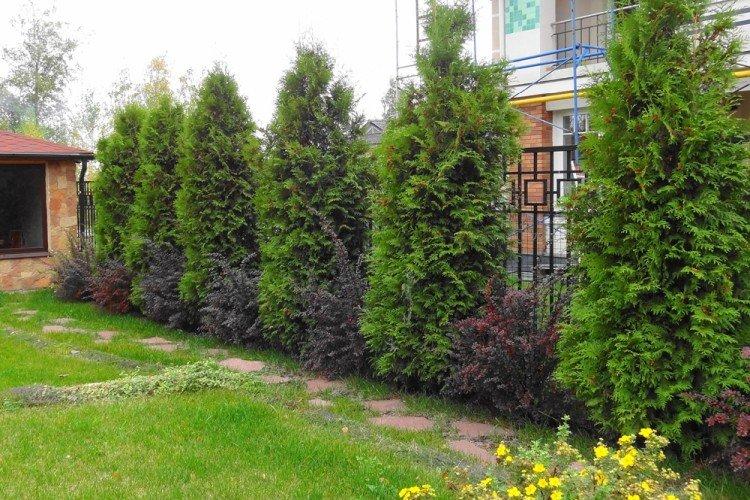
Yew
Yew is another small, compact tree that can be shaped in many different ways. He loves moisture, loose soil and easily tolerates frost. Yew can be planted even in snowy northern latitudes - high snow cover reliably protects its rhizome without additional insulation.
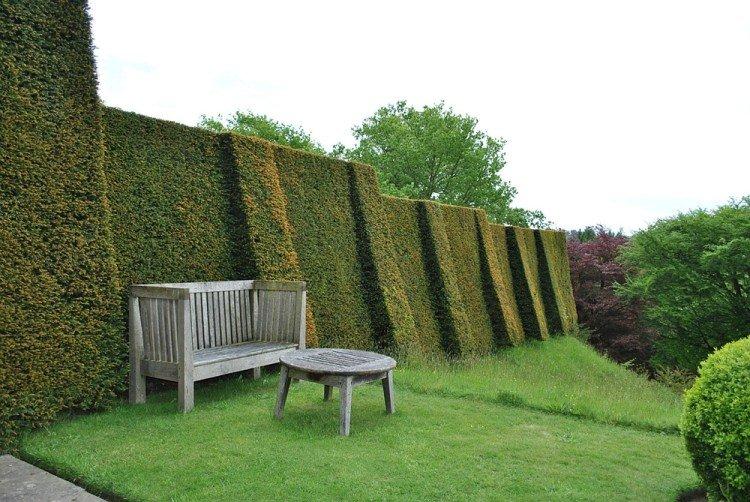
Rowan
Rowan is an absolutely unpretentious tree that takes root in almost any latitude - it grows even in the north and in Siberia. Feel free to plant it in the darkest and shady corners of the site, where other trees or shrubs do not survive. The fruit can be soaked to get rid of the bitterness and used in cooking.

Maple
Maple is notable for its beautiful curly foliage, which takes on a luxurious crimson hue by autumn. For planting along the fence, choose compact decorative species - the Ginnal maple, the holly Drummondi, Deborah or Globozum. Note that maples with purple and red foliage are susceptible to fungus and powdery mildew.
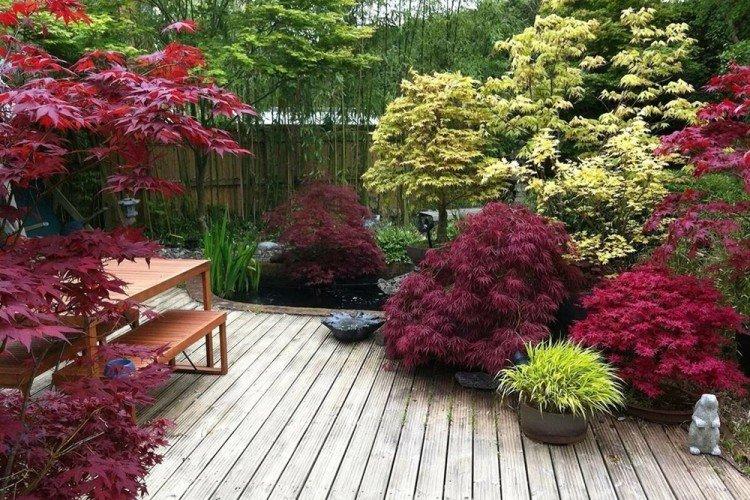
Chestnut
Large spreading chestnuts will give a lush dense crown and save your site from the heat. Pay attention to the genus of horse chestnuts, which has several dozen subspecies. It is they who have the very decorative fan-like leaves that we can no longer find here. Chestnuts do not like drought, but they tolerate the lack of light well and rarely get sick.

Willow
Willow requires almost no attention, but instead impresses with an elegant bend of branches and a lush crown. Most species grow in damp places, near water bodies and even in swamps. So if you have damp soil on your site, which is by no means suitable for all trees, it will only delight the willow. Among the varieties there are undersized shrubs and numerous hybrids.

Linden
During flowering, lindens delight you with an amazing aroma, and in season you will always have healthy tea. When planting trees, leave a distance of 3-5 meters between them. Over time, the crowns will still begin to touch, but linden tolerates haircuts and shaping very well.


